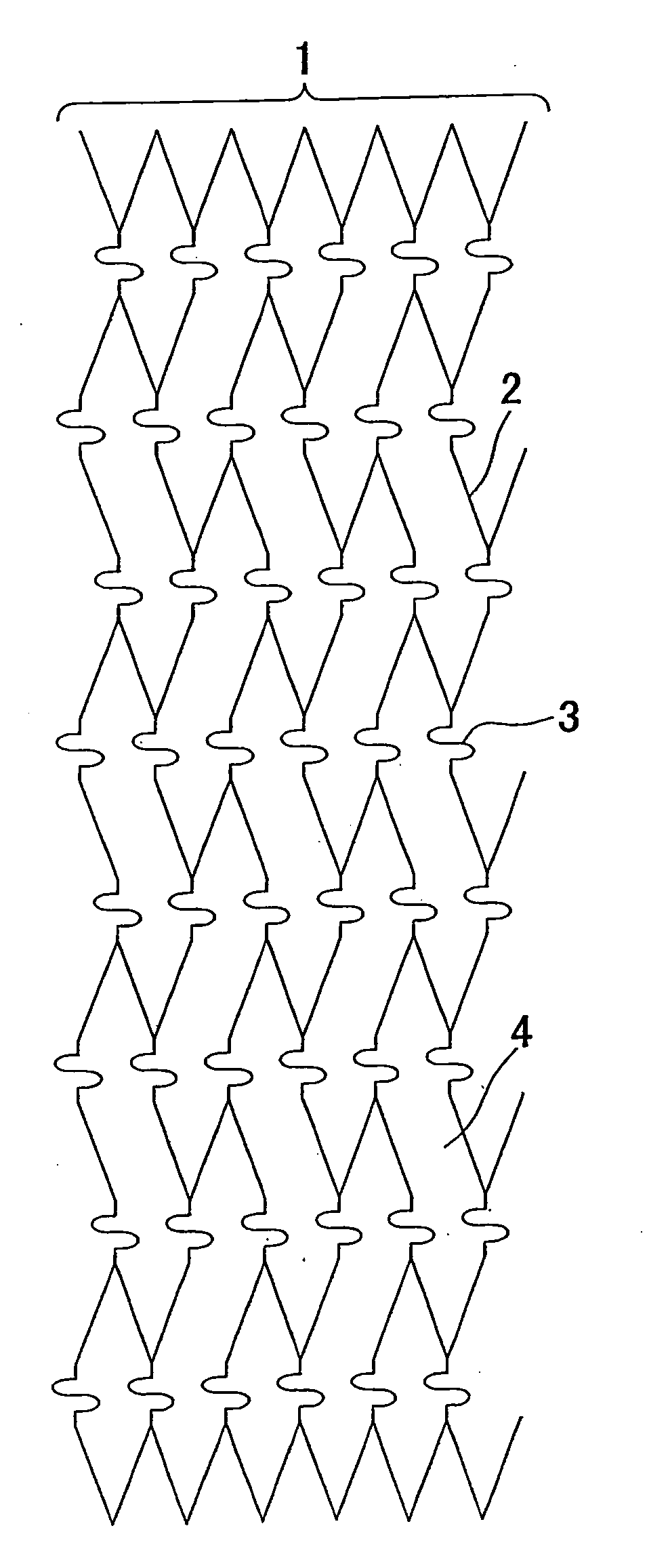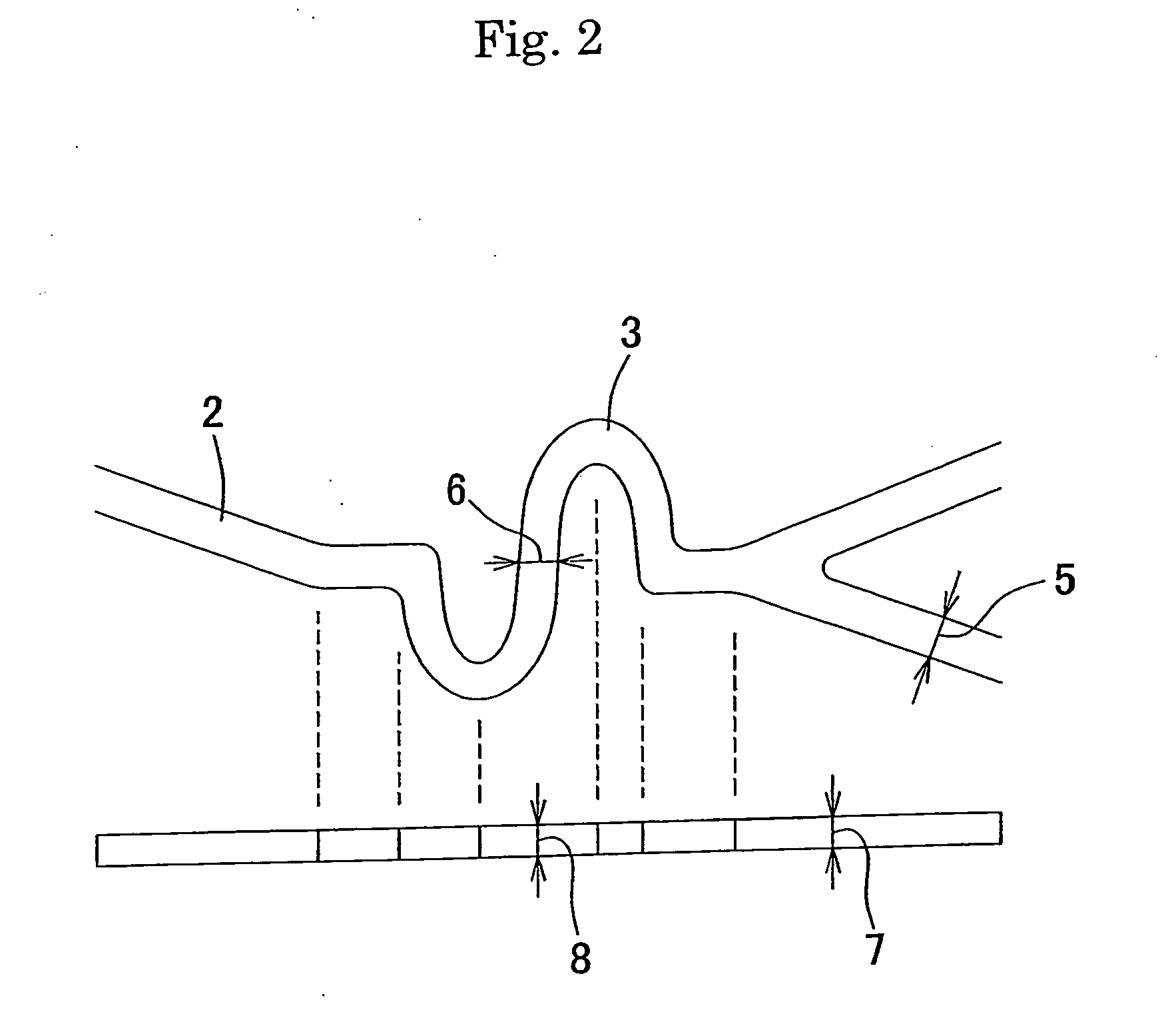Stent for intracranial vascular therapy and process for producing the same
a technology stents, which is applied in the field of stents used for intracranial vascular therapy, can solve the problems of significant reduction of patient load, low radial force of coil stents, and a small radial force disadvantage, so as to achieve safe holding, no biological reaction, and elevated visibility
- Summary
- Abstract
- Description
- Claims
- Application Information
AI Technical Summary
Benefits of technology
Problems solved by technology
Method used
Image
Examples
example 1
[0058] (Step a) A slotted tube stent (diameter after expansion: 3.0 mm, length: 18 mm, the number of links in the stent length direction: 6, and the number of links in the stent circumferential direction: 6) was produced by laser-cutting stainless steel SUS316L and used as a cathode, and platinum-plated titanium was used as an anode for electrolytic plating in an acid copper plating bath at 25° C. (200 g / l of copper sulfate and 50 g / l of sulfuric acid) under stirring with a magnetic stirrer with a current density of 7.8 A / dm2 for 30 minutes to form copper layers to a thickness of about 10 μm on the outer surface, the inner surface and the sides of the slotted tube stent. After electrolytic plating, the stent was washed in distilled water and then dried.
[0059] (Step b) The slotted tube stent having the copper layers having a thickness of about 10 μm was placed on the outer surface of a single lumen tube (inner diameter 0.53 mm, outer diameter 1.55 mm) which was produced by extrusion...
example 2
[0063] Five stents were produced by the same method as in Example 1 except that in the step c, electrolytic plating of gold was performed for 90 minutes to form gold layers of about 100 μm in thickness.
example 3
[0064] Five stents were produced by the same method as in Example 1 except that in the step c, electrolytic plating was performed in a platinum plating bath at 80° C. (Platanex 3LS produced by Electroplating Engineers of Japan Ltd.) under stirring with a magnetic stirrer with a current density of 2.0 A / dm2 for 300 minutes to form platinum layers of about 60 μm in thickness on the outer surfaces of the stents.
PUM
 Login to View More
Login to View More Abstract
Description
Claims
Application Information
 Login to View More
Login to View More - R&D
- Intellectual Property
- Life Sciences
- Materials
- Tech Scout
- Unparalleled Data Quality
- Higher Quality Content
- 60% Fewer Hallucinations
Browse by: Latest US Patents, China's latest patents, Technical Efficacy Thesaurus, Application Domain, Technology Topic, Popular Technical Reports.
© 2025 PatSnap. All rights reserved.Legal|Privacy policy|Modern Slavery Act Transparency Statement|Sitemap|About US| Contact US: help@patsnap.com



